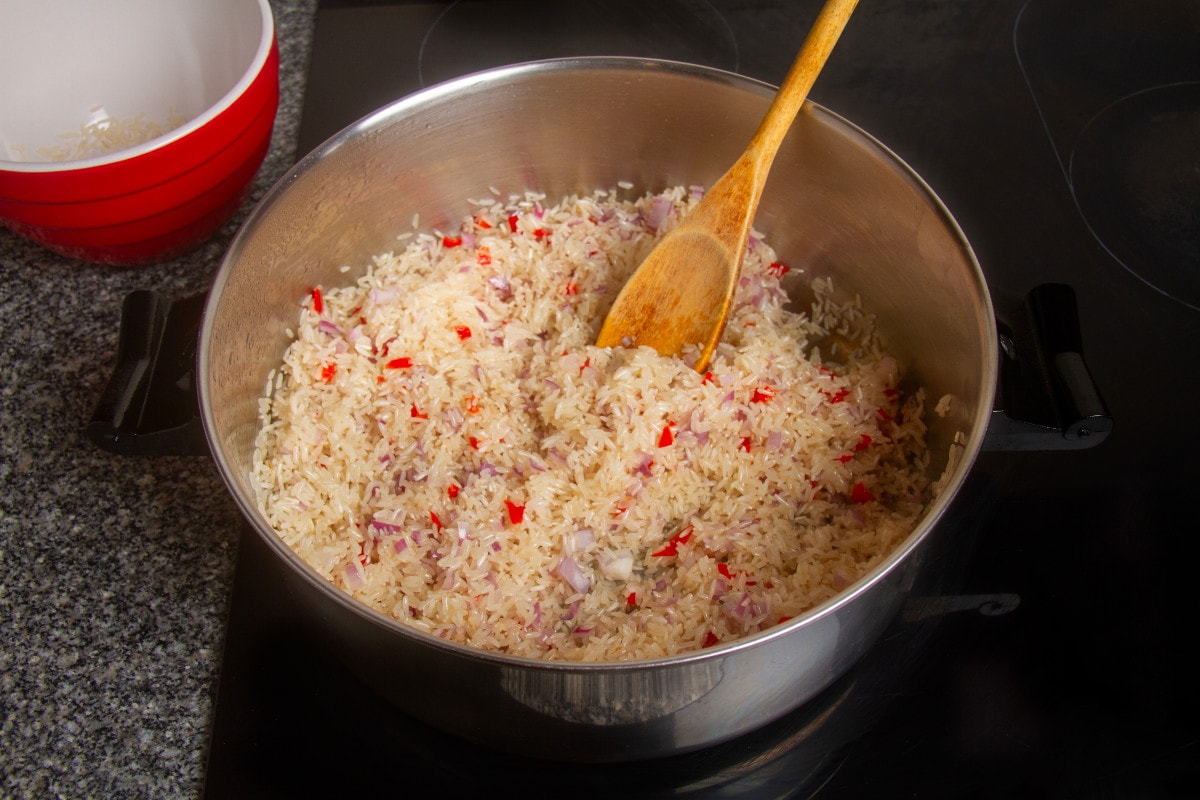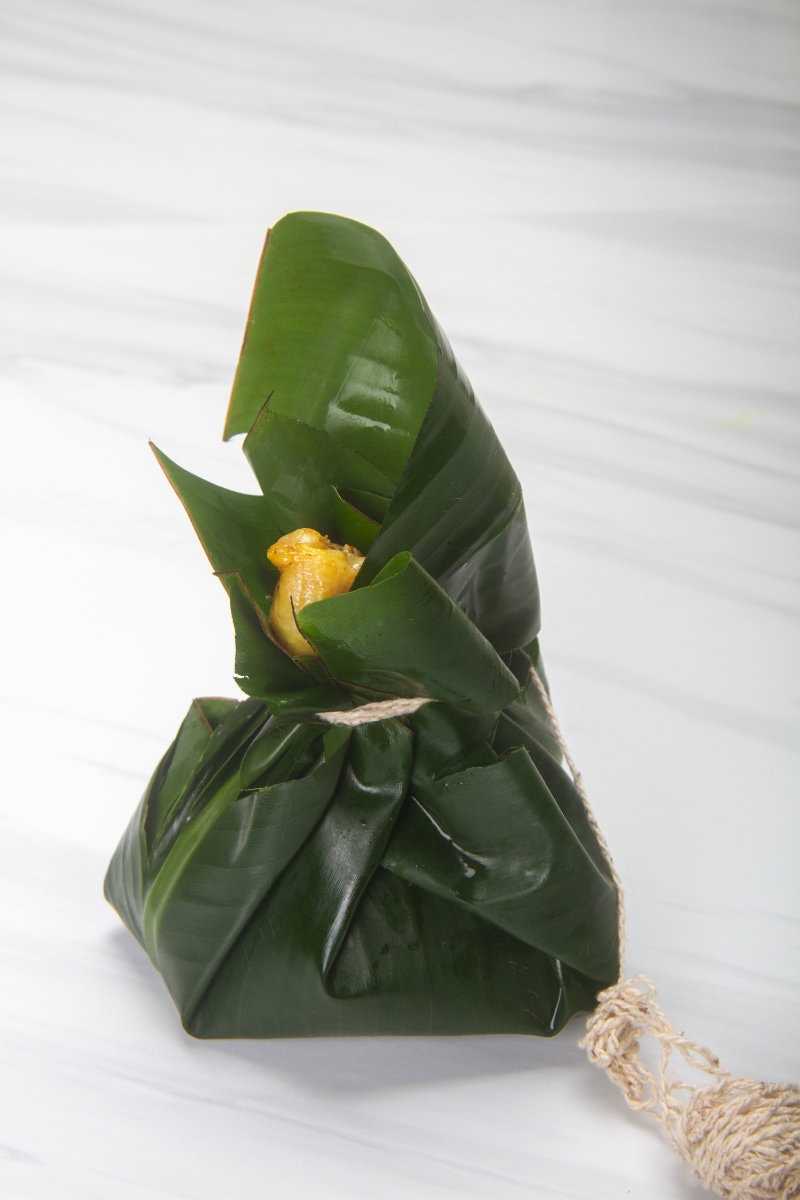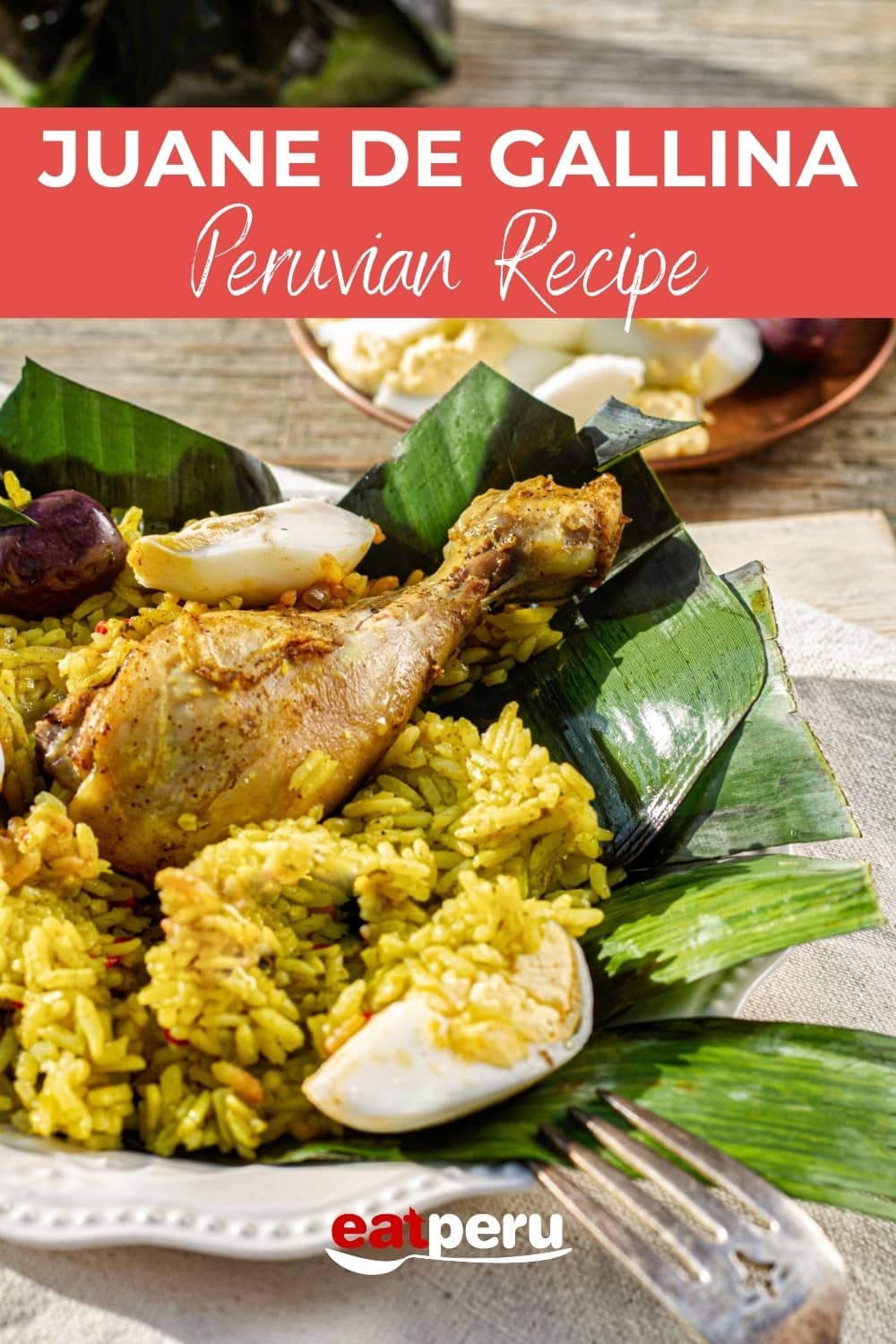Juane de gallina is a traditional Peruvian dish from the jungle region known as the Peruvian East or the Peruvian Amazon jungle. The juane we’ll be presenting in this post is different from the original versions of this dish, which were prepared by the indigenous people of the region.
The modern juane is a stewed rice dish with chicken, eggs, and olives. All steamed in bijao leaf.

What does Juane mean?
Even the name of the ancestral dish has been changed, so very little remains of it. The Quechuas (native Peruvians) called this dish “huanar,” which alludes to their gentle style of cooking. This cooking process requires gently steaming raw or precooked food wrapped in banana leaves, bijao, or other heliconia plant leaf.
The Catholic missionaries transformed the Quechua name “huanar” into “Juane”, making direct reference to San Juan. At present, the Juane de Gallina is prepared throughout Peru for the San Juan festivities, on June 24 of each year.
Cooking food inside sheets (usually leaves) is common in several regions of South America and the Caribbean. Most of these leaf-wrapped dishes, as well as hallacas and tamales, are products of the fusion of European, African and Native American techniques and ingredients. This type of cooking, in addition to being considered healthy, imparts a unique flavor to food, difficult to describe for those who have never tried it.
The “huanar” of the Quechuas contained cassava flour, seasoned with “palillo” or turmeric, chili peppers and pieces of meat from game animals such as venison, sajino (peccary), or wild birds.
The first region to prepare this dish was Moyobamba. Taking food in leaves allowed the indigenous people to travel farther into the jungle while preserving it for a longer period of time.
How to make Juane de Gallina












Juane is a fairly complicated dish, but the flavor is well worth the effort for those who decide to take on this challenge. The first step is to find the bijao. You can also use banana leaves, which, while not identical, also work perfectly. Similarly, wick or “raffia” is required to hold the juanes.
After tracking down the most unusual ingredients, it’s time to get started on the cooking. The first step is to cook the rice, which is done by sautéing it with chili peppers, onions, and garlic. Following that, the rice is cooked in a chicken broth with coriander / sacha culantro and turmeric.

The hen (gallina in Spanish) is also seasoned with turmeric and spices, and then sautéed and boiled. Before assembling juanes, cook and quarter the eggs.
With all the ingredients ready, place a small hill-shaped portion of rice on each leaf, followed by a piece of chicken, a half a hard-boiled egg, and olives. The bijao leaf is tied to form a kind of sachet or sack, which gives the juane its characteristic shape. Although some people boil the juanes, it is best to steam them so they don’t fall apart.
If you don’t have hen (an older bird with a slightly stronger taste and possibly tougher texture), you can also prepare it with chicken, which is also delicious.
Juane de Gallina
Equipment
Ingredients
For the rice
- 3 cups white rice 480 g.
- ⅛ cup oil
- 6 sweet peppers finely chopped
- 1 red onion finely chopped, 100 g.
- 2 turmeric roots
- 1 bunch coriander
- 10 leaves sacha culantro or substitute with coriander
- 6 cups chicken broth 1.5 liters
- Salt and pepper to taste
For the hen
- 1 kg hen thighs with skin and bone
- 3 large garlic crushed
- 1 teaspoon ground turmeric
- 1 bay leaf
- 4 cups chicken broth 1 liter
- Salt and pepper to taste
To assemble the juanes
- ½ cup black olives
- 4 eggs boiled and peeled
- ¼ cup oil
Instructions
For the rice
- Place three cups of the chicken broth in the blender glass, along with the coriander, sacha culantro, and peeled turmeric roots. Blend at maximum speed for a couple of minutes until the mixture becomes homogeneous. Set aside the rest of the chicken broth for cooking the rice. This separation is only necessary if your blender glass is small. Otherwise, you can blend everything together.
- In a saucepan over high heat add the oil, and immediately add the finely chopped red onion and chili peppers. Sauté for a few minutes until the onion loses its color.
- Add the rice, sauté for up to three minutes, stirring occasionally to prevent the rice from sticking to the bottom of the pot.
- Then add all the blended broth, and the leftover broth. You should have six cups of broth.
- Cook over high heat until all liquid on the surface is gone. At that time, reduce the heat to a minimum and continue to cook covered for ten more minutes and turn off the stove. Set aside.
For the hen
- Remove the skin from the pieces of hen meat. Rinse and pat dry. Put the pieces in a bowl and garnish with crushed garlic, turmeric powder, salt and pepper to taste.
- Turn stove to full heat. Once it is very hot, add the oil and the hen pieces. Spread them out evenly in the pot. After five minutes, turn them over so they cook on all sides.
- When the hen pieces are well browned, lower the temperature to half, add a liter of chicken broth, a bay leaf, and cook covered for at least twenty minutes so that the meat softens. When all the broth has evaporated, turn off the stove and remove the hen pieces from the pot. If there is a little broth left in the bottom of the pot, strain it and pour it on top of the rice.
For the juanes
- Banana leaves require little preparation in this juanes recipe. However, you should wash them under running water and dry them before starting the preparation. Place a leaf sheet on a flat, clean surface. Smear a little oil in the center of the leaf. Put about four heaped tablespoons of stewed rice in the center, a piece of hen on top, two pieces of egg, and an olive.
- Bringing its ends up, fold the sheet and secure it into a sack. If necessary, you can place an additional sheet underneath.
- Tie the leaves together with a thick thread or wick to close the bag. The simplest thing is to tie it around a piece of thigh bone. Do this until all your ingredients are used up.
- Put the steamer on high heat and add enough water. When the water is boiling, put the juanes in the steamer and steam for about thirty minutes. Remove from heat, and let them cool a bit. The correct way to serve the juanes is directly on the banana leaf. You can serve them with olives and boiled eggs.
Notes
Nutrition


Peruvian foodie. I’ve been writing about the food of Peru for over 10 years. Read more about the Eat Peru team here


Leave a Reply